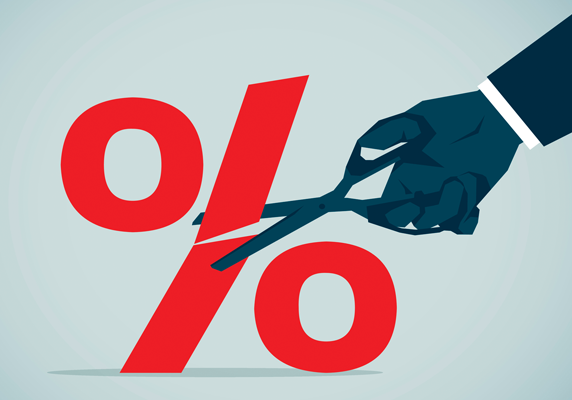
 The Bank of Canada interest rate is now at 1.25% – a decrease of 0.5% from 1.75%.
The Bank of Canada interest rate is now at 1.25% – a decrease of 0.5% from 1.75%.
What does the interest rate cut mean for Canadian consumers? That’s what we’re here to discuss.
Why Did the Bank of Canada Cut Interest Rates?
On March 4, 2020, the Bank of Canada (BOC) announced a sharper drop in interest rates than expected, taking the previously 1.75% rate down to 1.25%.
The main reason for this change was the COVID-19 virus — also known as the coronavirus.
The threat of the virus has been a shock to both the Canadian and global outlooks, the BOC said, representing a significant health threat to people in a growing number of countries.
Why does this matter for interest rates?
Due to the virus, global business is down, and supply chains are disrupted, meaning commodity prices and the Canadian dollar have also decreased. Less money is coming in — which means there is less to spend.
On the Canadian front, the BOC said that consumer spending stronger than expected, labour income is growing, and residential investment is up. However, in addition to the COVID-19 virus, there are other factors that have been stifling the economy.
The BOC said that recent rail line blockades, Ontario teacher strikes, and winter storms have affected the economy in the first quarter of 2020.
Plus, Canada isn’t the only country to cut interest rates. On March 3, the day before the BOC announcement, the U.S. also lowered its rate by 0.5%.
What Do Lower Interest Rates Mean for Your Finances?
First of all, lower interest rates could be good news for consumers carrying high debt loads or wanting to take on a loan. It means that people will have less interest to pay back on variable-rate debt. (Fixed interest rates may not be affected.)
So, if you have credit card debt or a variable-rate line of credit, this could help you pay it off sooner — which is a positive.
But there are some concerns on the horizon as well…
The threat of the coronavirus
The threat of the coronavirus could affect the worldwide economy even more as 2020 progresses. And this could potentially lead to a trickledown effect. While labour income has been growing, if business investment continues to decrease, it could mean fewer jobs and less income.
It also means that fewer people are travelling, so industries relying on tourism could take a hit as well.
The threat of more high-interest debt
On the other side of it, there’s another issue — how much debt Canadians can take on.
The reason why the Bank of Canada began raising interest rates in the first place was mainly to cut down on the huge amounts of consumer debt that Canadians are carrying. They wanted to make it harder to live beyond one’s means.
So, while the interest rate cut is good news for paying off debt or accessing a loan that you have a plan to pay off, there’s also a note of caution — don’t take on debt that you can’t afford just because interest rates are lower.
This is always prudent advice, but now it’s even more so. Just because interest rates have gone down, it’s still important to look at your finances as a whole and consider your big picture.
Would taking on another credit card or high-interest loan truly help your situation or could it hurt you in the long-run?
What’s Next for the Canadian Interest Rate?
The next BOC announcement is set for April 15, 2020. It’s possible that we will see another interest rate cut.
Use this time to clean up your finances and look for opportunities to get out of debt through budget management, debt consolidation, and more.
If you do have a big purchase coming up — like a wedding, post-secondary education, and so on — now could also be a good time to look into long-term loans that you can make a plan to realistically pay off.
At Prudent Financial, we offer bad credit car, personal, and home loans for people in Toronto and the GTA.
Get in touch today! We’ll help you deal with high-interest debt or make a plan for a long-term purchase. Call 1-888-852-7647 or visit https://www.prudentfinancial.net.
